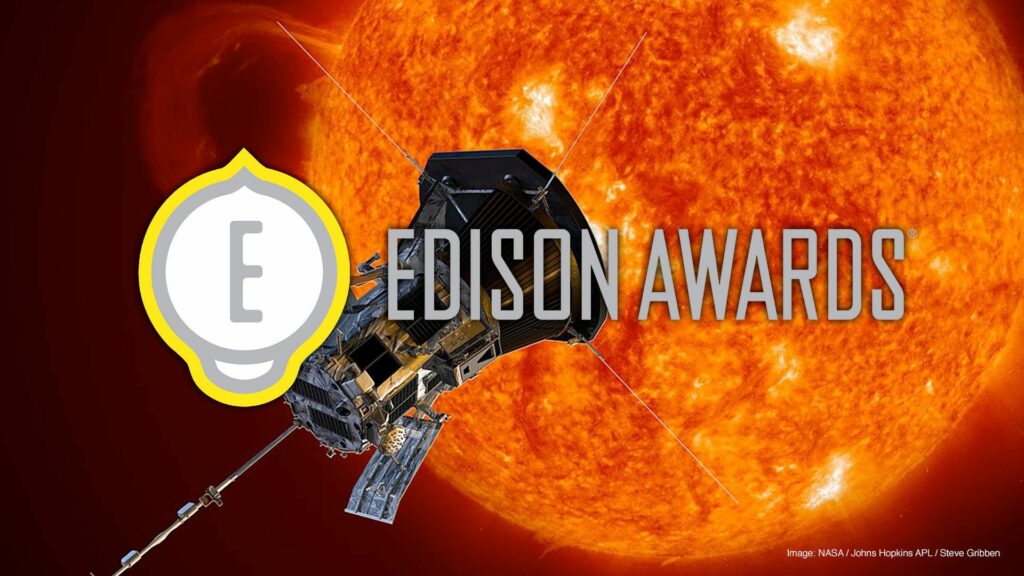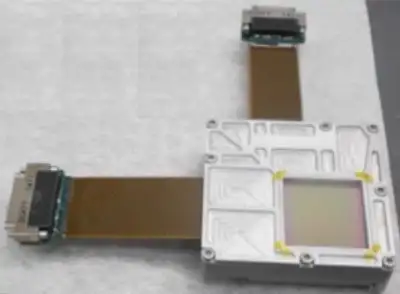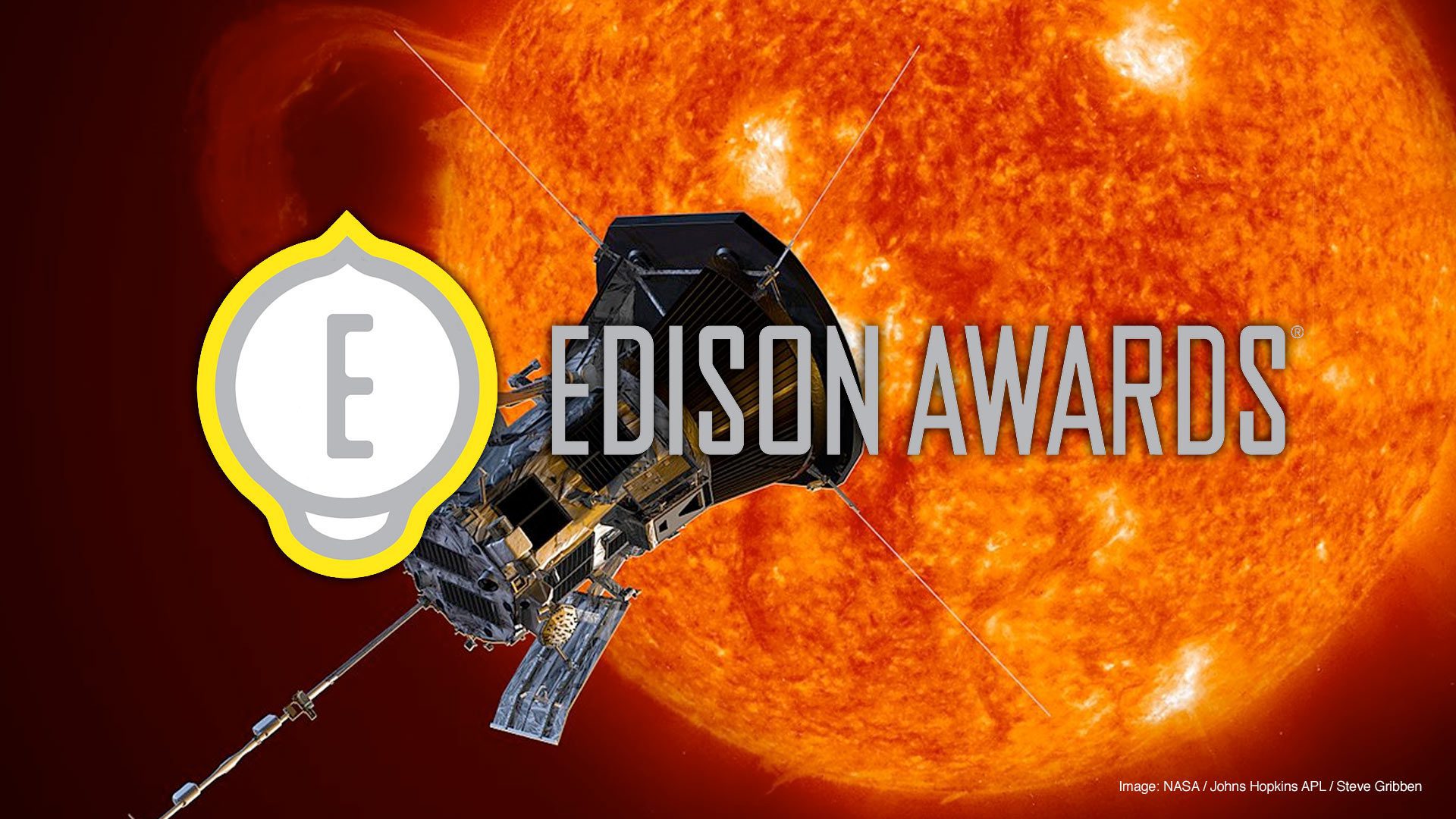
Space weather, such as solar winds, can have a serious impact on many of the technologies we have come to rely on. This includes satellite navigation services and communication satellites; even commercial airlines, back here on earth, can see electronics damaged from space weather events.
NASA’s Parker Solar Probe, has been designed to fly within 3.8 million miles of the surface of the Sun, closer than ever before. During orbit, the probe will take observations that help in understanding and predicting space weather.
SRI International has been nominated for an Edison Award 2020. This award recognizes our innovative work in delivering Active Pixel CMOS detectors to optimize the imaging used by NASA’s Parker Solar Probe.
Here, we take a look at how SRI designed and delivered technology robust enough to withstand the extreme conditions of the Parker Space Probe’s missions.
Probing for Space Weather with a WISPR
On August 12, 2018 NASA launched their Parker Solar Probe, the most ambitious robotic mission ever to be implemented by NASA. The mission: to observe the Sun in a closer proximity than ever before. In doing so, the field of space weather prediction has been revolutionized.
The Parker Solar Probe uses a Wide-Field Imager for Solar Probe Plus (WISPR) to gather the data during a mission. SRI International provided a vital technological contribution to the Wide-Field Imager for Solar Probe Plus (WISPR) for NASA’s Parker Solar Probe mission. The innovation was to design a CMOS imager for the extreme environment of space to take pictures of our solar system. Anyone with a smartphone most likely has a CMOS imager in the palm of their hand. SRI’s CMOS imager is different, having been developed with larger pixels to capture more light and to withstand the radiation environment of space.
SRI’s Active Pixel CMOS detectors have been developed to withstand the radiation of both space and the close proximity to the sun. This space-ready, hardened CMOS imager is able to withstand radiation exposure of greater than 100kRad. This technology provides the Parker Solar Probe with the robustness needed to optimally capture the closest images of the sun in human history.
SRI’s Active Pixel CMOS Detectors Close-Up
Jim Janesick of SRI, designed the space-ready CMOS Imager on the Parker Solar Probe; Jim was the perfect candidate to work on this puzzle of optimization under extreme conditions, as he was a leading expert in CCD and CMOS development. The technology, conceptualized with extraterrestrial applications in mind, was supported by the Naval Research Laboratory (NRL).
The work began by taking the idea behind existing CMOS technology and redesigning it for extreme conditions. SRI used three metrics:
● Radiation tolerance
● Low power consumption
● Larger pixels
These metrics were used as the basis for turning common CMOS imager technology, typically found in smartphones and tablets, into a space-ready imager, ultimately chosen by NASA.
Using these three metrics as a design remit, SRI produced a CMOS Imager that could:

Tolerate radiation of greater than 100kRad;
● Use much less power; and,
● Captured larger pixels, 10-micron pixels, enabling the imager to capture more light, a benefit when studying the sun.
SRI’s CMOS Imager is one of four instrument suits onboard the probe. It enables scientists to more deeply and optimally study the corona of the Sun, helping to forecast solar weather events that have the potential to disrupt essential earth technologies.
SRI CMOS Storming Ahead for the Good of Humankind
SRI’s CMOS technology has a wide societal impact. By allowing scientists to study the Sun’s corona, up close, and in an optimal manner, it finally allows science to explore the mysteries of our Sun. The information gathered and sent back to scientists on Earth, provides vital data needed to understand and forecast solar weather events. Already, after only two initial orbits, a special edition of Astrophysical Journal Supplement series, featuring over 50 science papers based on the data from the mission, has been published.
SRI’s Active Pixel CMOS detectors have the potential to foster further innovation around solar weather events, including preventative or protective technologies to protect Earth’s infrastructure against solar disruptions.
The Edison Awards 2020
The Edison Awards, now in its 32nd year, takes the heritage of Thomas Edison to present world-renowned awards contributors, breaking new ground in science, technology, design, engineering and marketing. The Edison Awards winners showcase the best in innovation. The accomplishments, recognized by a bronze, silver or gold award across a number of categories, show innovation in addressing real-world needs. The winning solutions show that they can capture opportunities and create new markets or even generate novel industries.
In 2020, the innovative work done to develop SRI’s Active Pixel CMOS detectors has been nominated in the award category of “Aerospace Innovation”.
SRI is excited to announce the Parker Solar Probe was awarded gold in aerospace flight technology for the 2020 Edison Awards.
In the News
Images from Parker Solar Probe’s third orbit released to the public.
SRI’s CMOS imager takes flight on NASA’s Solar Orbiter in order to take the first-ever images of the Sun’s poles.





